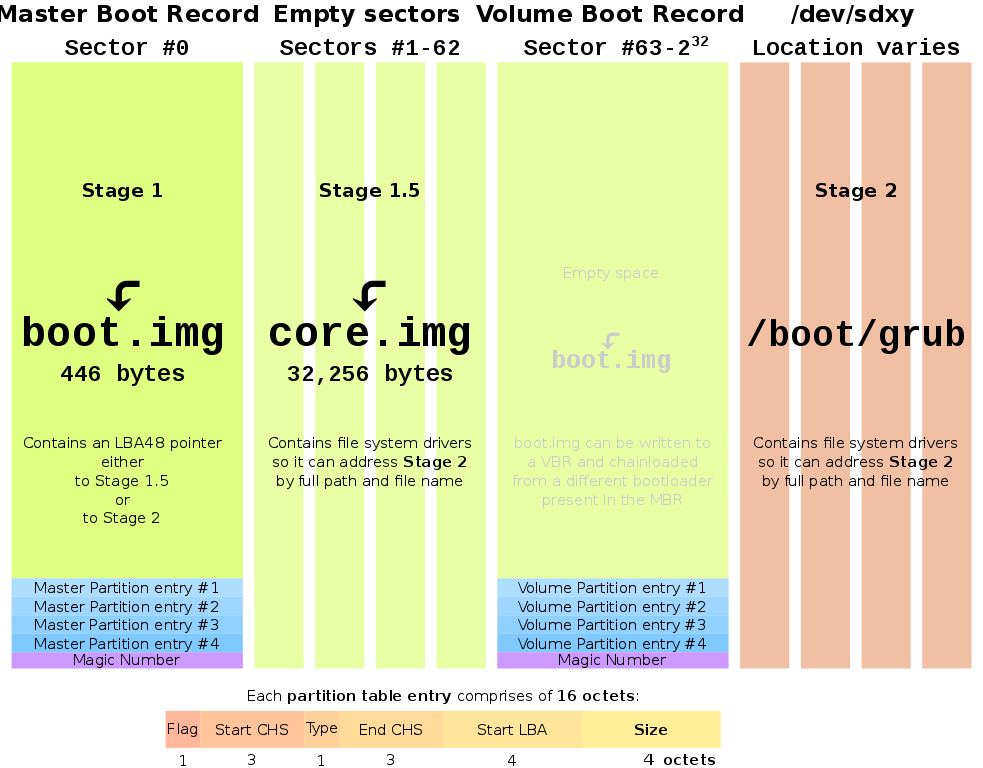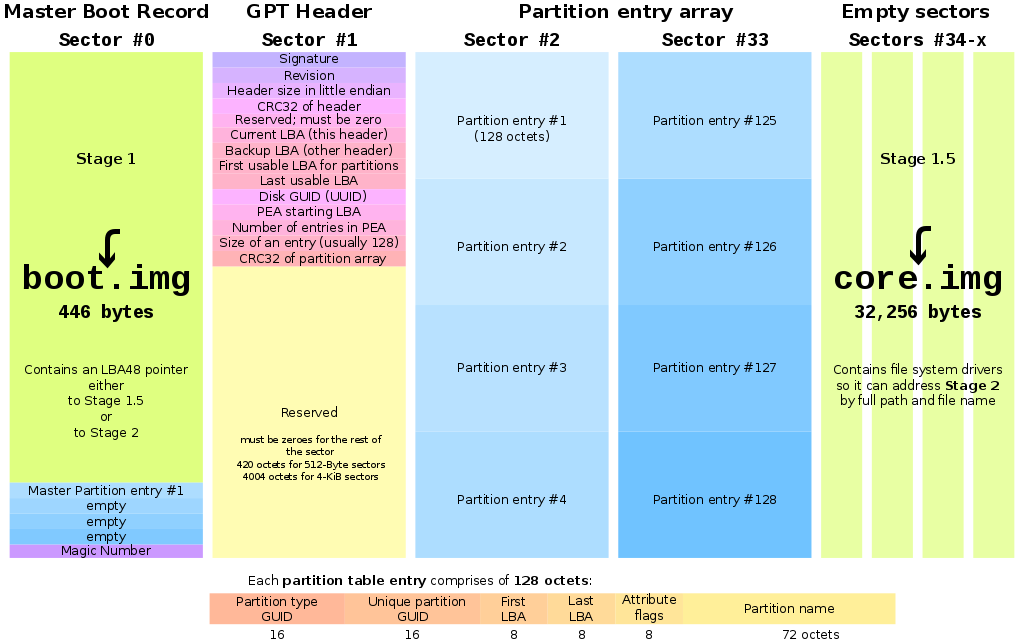GRUB: GRand Unified Bootloader
This article introduces the GNU GRUB (GRand Unified Bootloader).
Overview
GNU GRUB is a Multiboot boot loader. It was derived from GRUB, the GRand Unified Bootloader, which was originally designed and implemented by Erich Stefan Boleyn.
Briefly, a boot loader is the first software program that runs when a computer starts. It is responsible for loading and transferring control to the operating system kernel software (such as the Hurd or Linux). The kernel, in turn, initializes the rest of the operating system (e.g. GNU).
GRUB Development
GRUB 2 has replaced what was formerly known as GRUB (i.e. version 0.9x), which has, in turn, become GRUB Legacy. Enhancements to GRUB are still being made, but the current released versions are quite usable for normal operation.
GRUB Legacy is no longer being developed. For the differences between GRUB Legacy and GRUB, see the Grub Legacy Documentation.
GRUB 2 is now available via FTP, or Git:
git clone git://git.savannah.gnu.org/grub.git
GNU GRUB on MBR partitioned hard disk drives:

GNU GRUB on GPT partitioned hard disk drives:

GNU GRUB2 components:
